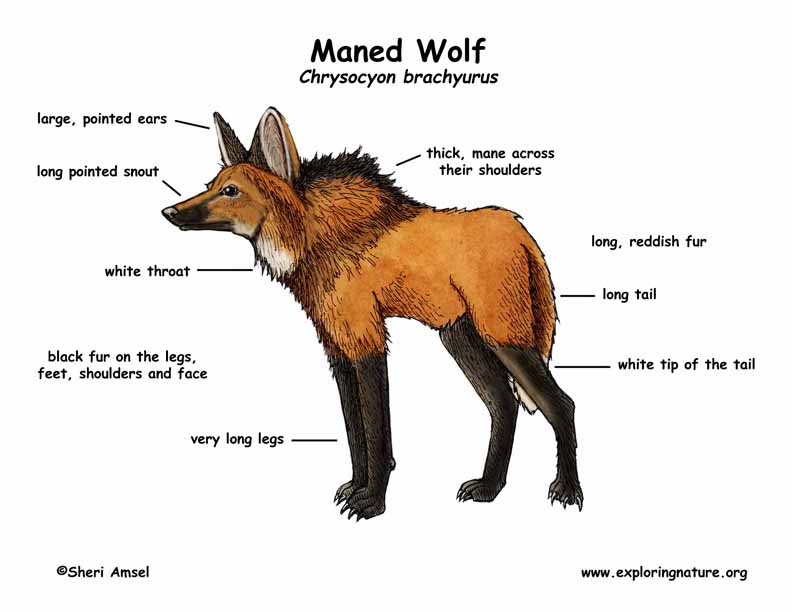

They are found in South America, mostly in sections of Brazil, but also in spotty areas of Peru, Bolivia, Paraguay and Argentina. Their range has shrunk over time and they are considered endangered.
They live in a variety of habitats from grasslands and open forests to swamps and river habitats.
They are tall, lean wolves reaching more than 5.5 feet (1.6m) long including the long tail but only weighing about 50 pounds (22.6 kg). They have long, reddish fur with black on their legs, feet, shoulders and face. They have a white throat and white tip of the tail. They have very long legs that help them see over the tall grass on the pampas. They have large, pointed ears, a pointed snout and a thick mane across their shoulders.
They are solitary animals except to breed and very territorial. They are active at night (nocturnal), but sometimes seen at dusk and dawn (crepuscular). When they hunt, they often leap and pounce on prey.
They are omnivorous, eating small mammals, birds, eggs, reptiles, insects, fish, fruit and roots.
They have no natural predators, but are killed by man. They are also losing their large open habitats, so their range is shrinking.
They are thought to mate for life, yet only get together to breed. Females are pregnant for about 2 months (gestation) and have up to 5 pups. They are born black but turn reddish within a few weeks.
They have lived up to 16 years in captivity, but have a much shorter lifespan in the wild.
Kingdom: Animalia
Phylum: Chordata
Subphylum: Vertebrata
Class: Mammalia
Order: Carnivora
Suborder: Caniformia
Family: Canidae
Genus: Chrysocyon
Species: Chrysocyon brachyurus
When you research information you must cite the reference. Citing for websites is different from citing from books, magazines and periodicals. The style of citing shown here is from the MLA Style Citations (Modern Language Association).
When citing a WEBSITE the general format is as follows.
Author Last Name, First Name(s). "Title: Subtitle of Part of Web Page, if appropriate." Title: Subtitle: Section of Page if appropriate. Sponsoring/Publishing Agency, If Given. Additional significant descriptive information. Date of Electronic Publication or other Date, such as Last Updated. Day Month Year of access < URL >.
Amsel, Sheri. "Wolf (Maned)" Exploring Nature Educational Resource ©2005-2024. December 14, 2024
< http://www.exploringnature.org/db/view/Wolf-Maned >

